|
|
Post by Ceratodromeus on Jan 24, 2016 0:40:29 GMT 5
Jaguarundi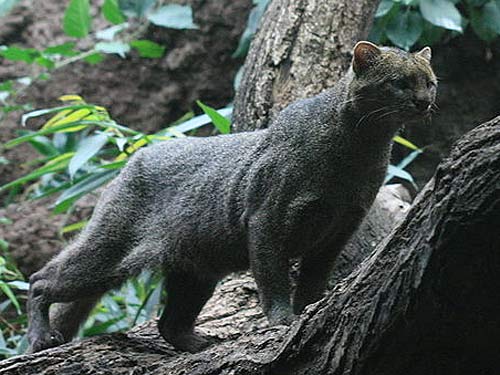 The jaguarundi or eyra cat (Puma yagouaroundi), is a small wild cat native to Central and South America. In 2002, the IUCN classified the jaguarundi as Least Concern, although they considered it likely that no conservation units beyond the megareserves of the Amazon Basin could sustain long-term viable populations. Its presence in Uruguay is uncertain. The jaguarundi has short legs, an elongated body, and a long tail. The ears are short and rounded. The coat is without spots, uniform in color, with, at most, a few faint markings on the face and underside. The coat can be either blackish to brownish-grey (grey phase) or foxy red to chestnut (red phase); individuals of both phases can be born in the same litter. It has a total length of 53 to 77 cm (21 to 30 in) with a 31- to 60-cm-long tail, and weighs 3.5 to 9.1 kg (7.7 to 20.1 lb). Lace monitor The lace monitor or lace goanna (Varanus varius) is a member of the monitor lizard family, Australian members of which are commonly known as goannas. It belongs to the subgenus Varanus. Lace monitors are the second-largest monitor in Australia after the perentie. They can be as long as 2.1 m (over 6.8 ft) with a head-and-body length of up to 76.5 cm (2.5 ft). The tail is long and slender and about 1.5 times the length of the head and body.The largest recorded weight of a lace monitor 17kg (37lb), but most adults are much smaller
|
|
Deleted
Deleted Member
Posts: 0
|
Post by Deleted on Jan 25, 2016 0:03:45 GMT 5
Before hand, I would have said that the lace monitor would have won due to size advantage. But I'm not too sure anymore... a lot of people like to exaggerate the weights of monitors, often there is some large weight said for the lizard, and then some new weight data reveal that they are much smaller than initially thought. I even remembered hearing of weight data of around 3 kg for Nile/Water Monitors. Here are some weight data for lace monitors. 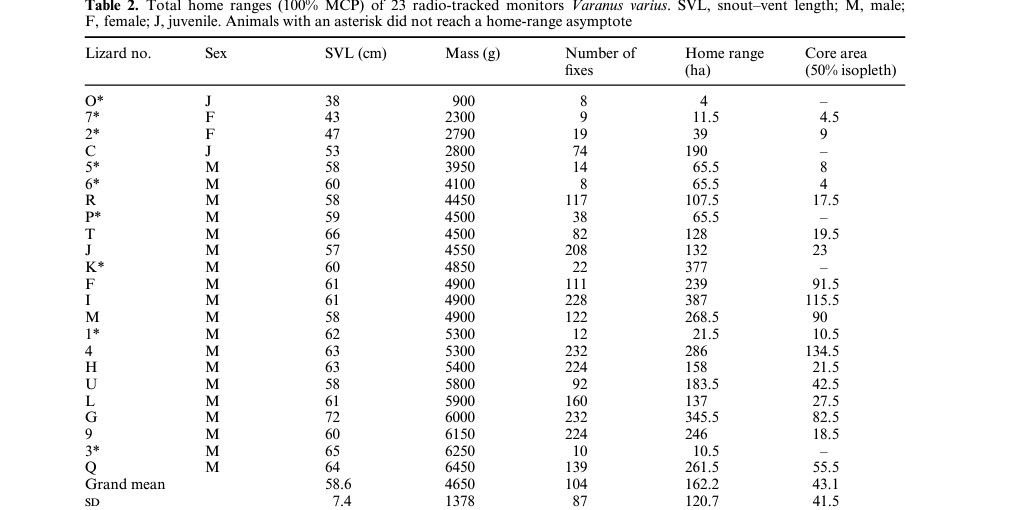 Also, here is some weight data on a small sample of adult males (credit goes to Cerato for initially finding this): 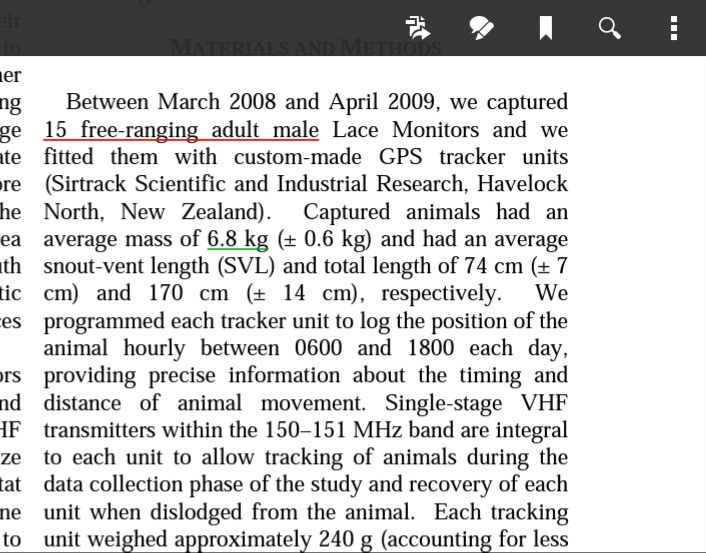 --- Here is some limb robusticity data for jaguarundis: 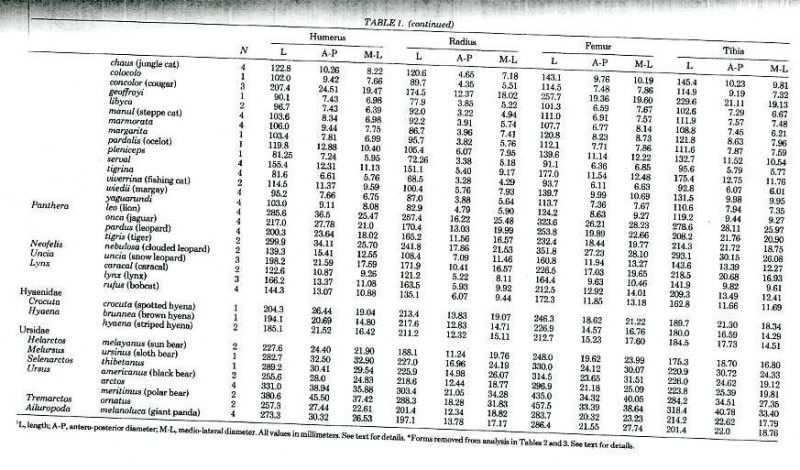 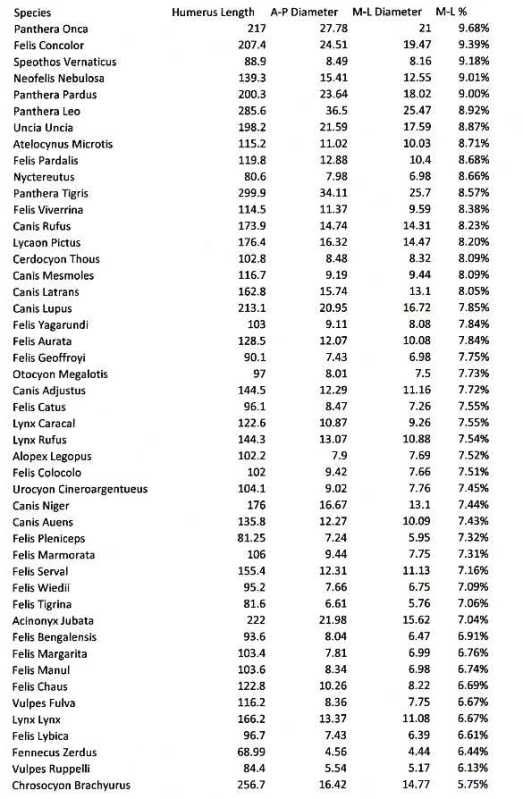 IMO the jaguarundi is quite well built for a cat of its size, and it could use the advantage of grabbing a hold of the monitor with its forelimbs quite effectively. Some jaguarundi skulls you might find after a search are actually from individuals who look to have quite chipped teeth. Here's a proper skull:  It seems to have a strong bite indicated by the long canines and an okay sagittal crest. They are also sometimes described as a predator towards armadillos, so that's another thing to suggest that it could have a quite strong bite. --- IMO some good weight data on the lace monitor's weight would be needed for me to give a full-out opinion on this match-up, but it seems to me that the match seems to go slightly towards the jaguarundI, as it seems to be able to utilize its strength better, and it doesn't seem too disadvantaged in the weight department by the lace monitor. I think I would say that a 6/10 win ratio is a safe bet in favour of the jaguarundi IMO; I think the jaguarundi wins this around 6/10 for now. |
|
|
|
Post by Venomous Dragon on Jan 25, 2016 0:52:44 GMT 5
Before hand, I would have said that the lace monitor would have won due to size advantage. But I'm not too sure anymore... a lot of people like to exaggerate the weights of monitors, often there is some large weight estimate for the lizard, and then some new weight estimates reveal that they are much smaller than initially thought. I even remembered hearing of weight estimates of around 3 kg for Nile/Water Monitors. Here are some weight data for lace monitors.  Also, here is some weight data on a small sample of adult males (credit goes to Cerato for initially finding this):  --- Here is some limb robusticity data for jaguarundis:   IMO the jaguarundi is quite well built for a cat of its size, and it could use the advantage of grabbing a hold of the monitor with its forelimbs quite effectively. Some jaguarundi skulls you might find after a search are actually from individuals who look to have quite chipped teeth. Here's a proper skull:  It seems to have a strong bite indicated by the long canines and an okay sagittal crest. They are also sometimes described as a predator towards armadillos, so that's another thing to suggest that it could have a quite strong bite. --- IMO some good weight data on the lace monitor's weight would be needed for me to give a full-out opinion on this match-up, but it seems to me that the match seems to go slightly towards the jaguarundI, as it seems to be able to utilize its strength better, and it doesn't seem too disadvantaged in the weight department by the lace monitor. I think I would say that a 6/10 win ratio is a safe bet in favour of the jaguarundi IMO; I think the jaguarundi wins this around 6/10 for now. You misunderstand, these are not weight estimates. The problem is that often only the upper end of the animals weight range is given, not the average. Why would anyone use weight estimates for a living animal of this size that lives in high numbers in proximity to humans? What you are seeing is the difference between the largest specimens are the average specimens. |
|
Deleted
Deleted Member
Posts: 0
|
Post by Deleted on Jan 25, 2016 1:04:04 GMT 5
Before hand, I would have said that the lace monitor would have won due to size advantage. But I'm not too sure anymore... a lot of people like to exaggerate the weights of monitors, often there is some large weight estimate for the lizard, and then some new weight estimates reveal that they are much smaller than initially thought. I even remembered hearing of weight estimates of around 3 kg for Nile/Water Monitors. Here are some weight data for lace monitors.  Also, here is some weight data on a small sample of adult males (credit goes to Cerato for initially finding this):  --- Here is some limb robusticity data for jaguarundis:   IMO the jaguarundi is quite well built for a cat of its size, and it could use the advantage of grabbing a hold of the monitor with its forelimbs quite effectively. Some jaguarundi skulls you might find after a search are actually from individuals who look to have quite chipped teeth. Here's a proper skull:  It seems to have a strong bite indicated by the long canines and an okay sagittal crest. They are also sometimes described as a predator towards armadillos, so that's another thing to suggest that it could have a quite strong bite. --- IMO some good weight data on the lace monitor's weight would be needed for me to give a full-out opinion on this match-up, but it seems to me that the match seems to go slightly towards the jaguarundI, as it seems to be able to utilize its strength better, and it doesn't seem too disadvantaged in the weight department by the lace monitor. I think I would say that a 6/10 win ratio is a safe bet in favour of the jaguarundi IMO; I think the jaguarundi wins this around 6/10 for now. You misunderstand, these are not weight estimates. The problem is that often only the upper end of the animals weight range is given, not the average. Why would anyone use weight estimates for a living animal of this size that lives in high numbers in proximity to humans? What you are seeing is the difference between the largest specimens are the average specimens. Ah alright. I think that I might have used the wrong terminology for this. I still think that the size of some of these monitors can be a bit exaggerated though. Sorry I am just a new member here. Not all well educated on subjects including these kinds of animals (monitors). |
|
|
|
Post by Ceratodromeus on Jan 25, 2016 1:28:01 GMT 5
Alot of the time, especially on the wikipedia pages, weights and total body lengths are given without citations, and are rather unreliable. VD is correct in what he says as well, alot of these pages(e.g. the lacie wikipedia page), give the largest animals' weights (though the 20kg animal appears to be unsubstantiated ) with some explanation such as "but most animals are much smaller" without any further explanation. You are correct in saying that most popular internet sites will just throw the higher end animals and try to pass them off as average, which creates alot of misconceptions. Hopefully, the weights i've posted on carnivora for these animals(Varanidae as a whole, really) alleviates some of that confusion  . If i wasn't lazy i would re-write alot of those pages. All of the animals in the studies i took the screen shots were weighed on electronic scales to the nearest gram, it should be noted. |
|
|
|
Post by An Goldish Jade on Mar 12, 2016 9:28:57 GMT 5
Lace Monitor seems to have an weak skull, when compared to the feline, one bite by the Jaguarundi would kill it, thought I am actually wonder what is the Lace Monitors tactic of killing similar sized animals.
|
|
|
|
Post by Ceratodromeus on Mar 12, 2016 10:09:04 GMT 5
one bite is not going to kill an adult lace monitor.
as to how they go about killing a big prey animal, they grab and thrash it.
|
|
|
|
Post by An Goldish Jade on Mar 12, 2016 10:28:34 GMT 5
An Jaguarundi could inflict fatal bite onto the skull at similar size, if considering that Lace Monitor have an skull much less robust, then its opponent it seems like it could very well happen, as for "grab and thrash it" when have the Monitor killed anything close to its size?
|
|
|
|
Post by Ceratodromeus on Mar 12, 2016 11:33:06 GMT 5
not likely.
was not speaking on this so i would kindly insist you not put words in my mouth.
|
|
|
|
Post by An Goldish Jade on Mar 13, 2016 9:08:41 GMT 5
Then, there will be no explanation, since you cannot show how it(Monitor) would do what you said it would do(quickly kill similar sized animals).
|
|
|
|
Post by Venomous Dragon on Mar 13, 2016 9:21:46 GMT 5
Then, there will be no explanation, since you cannot show how it(Monitor) would do what you said it would do(quickly kill similar sized animals). yo ricky retardo, let me simplify this he said the lizard dispatches prey by grabbing prey and violently shaking it, he said nothing about how the lizard would fight the jaguarundi |
|
|
|
Post by An Goldish Jade on Mar 13, 2016 9:41:20 GMT 5
That would mean Ceratodromeus did not answer the question, because
"similar sized animal" do not mean "prey animal" as I did not ask about how it kills prey, instead I asked for how it could quickly destroy an similar sized opponent, and don't make it personal.
|
|
|
|
Post by Venomous Dragon on Mar 13, 2016 10:15:11 GMT 5
That would mean Ceratodromeus did not answer the question, because "similar sized animal" do not mean "prey animal" as I did not ask about how it kills prey, instead I asked for how it could quickly destroy an similar sized opponent, and don't make it personal. no he didn't but that's something you should have been able to easily discern. via blood loss is likely how the jaguarundi would die, i don't see why the varanid would have to end the fight quickly as the jaguarundi has virtually no hope of ending it quickly either and i haven't made it personal, i certainly could though. |
|
|
|
Post by Ceratodromeus on Mar 13, 2016 11:14:42 GMT 5
and i said that where?
anyway, like venomous dragon already said, via bloodloss is how the cat would expire -- the venom of these lizards prevents clotting.
|
|
|
|
Post by An Goldish Jade on Mar 15, 2016 13:17:21 GMT 5
I asked for "how could it kill similar sized animal" and was waiting for the respond of how would it kill the Jaguarundi, not how it will kill its prey.
|
|